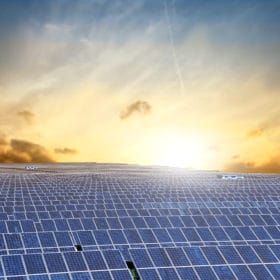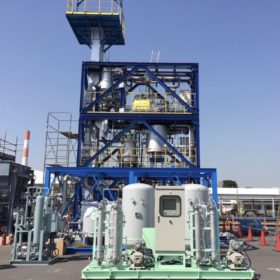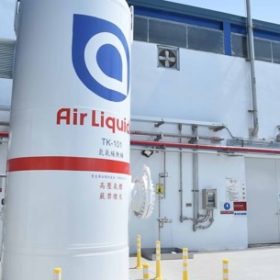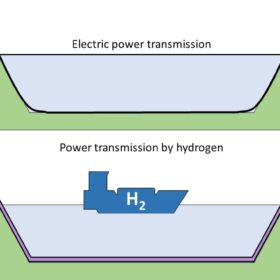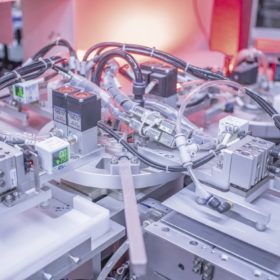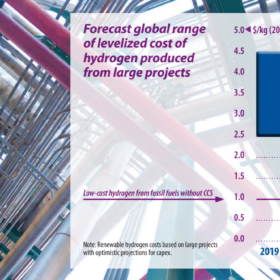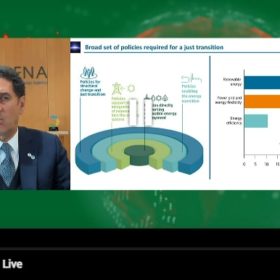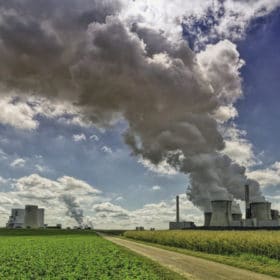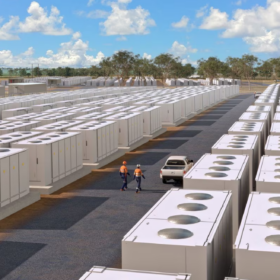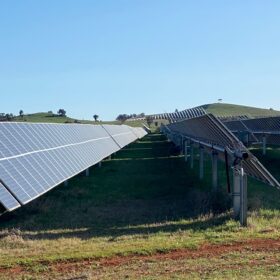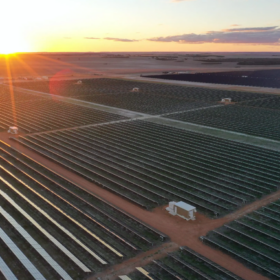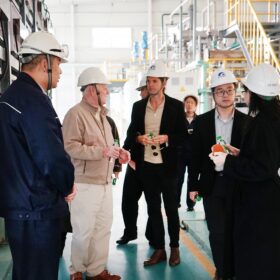Solar PV driving green hydrogen to undercut gas, says latest BloombergNEF forecast
BloombergNEF’s latest modelling has found that solar PV is the key driver behind an accelerating cost decline in green hydrogen. The forecast shows green hydrogen’s cost declining by 85% by 2050, undercutting natural gas as well as both blue and grey hydrogen production.
The Hydrogen Stream: Projects move forward in China, Japan, Australia and across several European countries
Sinopec wants to build 1,000 hydrogen refueling stations by 2025. Ways2H is building a facility in the Tokyo area that will convert daily 1 ton of dried sewage sludge into 40-50 kilograms of hydrogen for fuel cell mobility and power generation. Ørsted wants to deploy two renewable hydrogen production facilities for a total of 1 GW by 2030. Wacker Chemie is planning to produce green hydrogen and renewable methanol at its German site.
Solar still largely underestimated
Two recent studies have separately shown that many scenarios assessing global decarbonization pathways are still predicting too-low future PV capacity and too-high LCOEs for the solar technology. The researchers analyzed scenarios provided by scientific researchers, government bodies and non-governmental organizations, including the United Nations’ Intergovernmental Panel on Climate Change (IPCC), the U.S. Energy Information Administration (EIA), the European Commission, the Indian government, the International Energy Agency (IEA), and the International Renewable Energy Agency (IRENA), among others.
The Hydrogen Stream: Siemens targets $1.50/kg by 2025, BP and Saudi Aramco bet on blue hydrogen
The German company expects to roll out its in-house proton exchange membrane (PEM) electrolysis technology to implement a gigawatt production of electrolyzers. BP partners with UK gas distributor Northern Gas Networks (NGN) to develop blue hydrogen and Saudi Aramco teams up with Hyundai Heavy Industries to do the same. Italy’s Snam wants to build hydrogen projects in the United Arab Emirates.
Hydrogen shipping vs submarine cables
Hydrogen transportation and submarine power lines have been compared by an international research team to find out which may be the cheapest option to connect for energy exchange regions separated by the sea. According to their findings, the hydrogen shipping alternative does not present very good prospects of applicability in the future, unless some disruptive technological breakthroughs are made. What makes compressed and liquified hydrogen ships still attractive, however, is that they can export energy almost anywhere, and that electrolysis and liquefaction plants are relatively easy to expand compared to marine cables.
‘Falling solar module costs are behind us’
Canadian Solar is pivoting towards energy storage and is preparing to IPO its manufacturing and Chinese solar project activity in China, under the CSI Solar operation, by July.
Sunday read: History repeats
“Unprecedented” was a term widely used in 2020, as the world grappled with the Covid-19 pandemic. The same word can be similarly applied to the plans and investments in production capacity announced by Chinese PV manufacturers right across the supply chain. But what shape are these expansions taking and what is driving this renewed confidence? Vincent Shaw reports from Shanghai.
Saturday read: More than just a pipe dream
When coupled to gigawatt-scale solar and wind generation, green hydrogen could be the clean fuel to unlock hard-to-electrify sectors of the economy. But first it must be transported cost-effectively to where it’s needed.
Global temperature goal of 1.5C needs 14 TW of solar by mid century
Renewable electricity will be linked to 90% of the actions needed to remove carbon emissions in 2050, according to the International Renewable Energy Agency, and the biggest volume of generation capacity will be provided by solar.
Ugandan youth activist stuns Berlin energy transition event
Vanessa Nakate shocked organisers of the Berlin Energy Transition Dialogue by delivering a speech highlighting how she and a fellow youth activist had to submit their presentations for approval in advance of the event and were banned from criticising any of the politicians involved.
